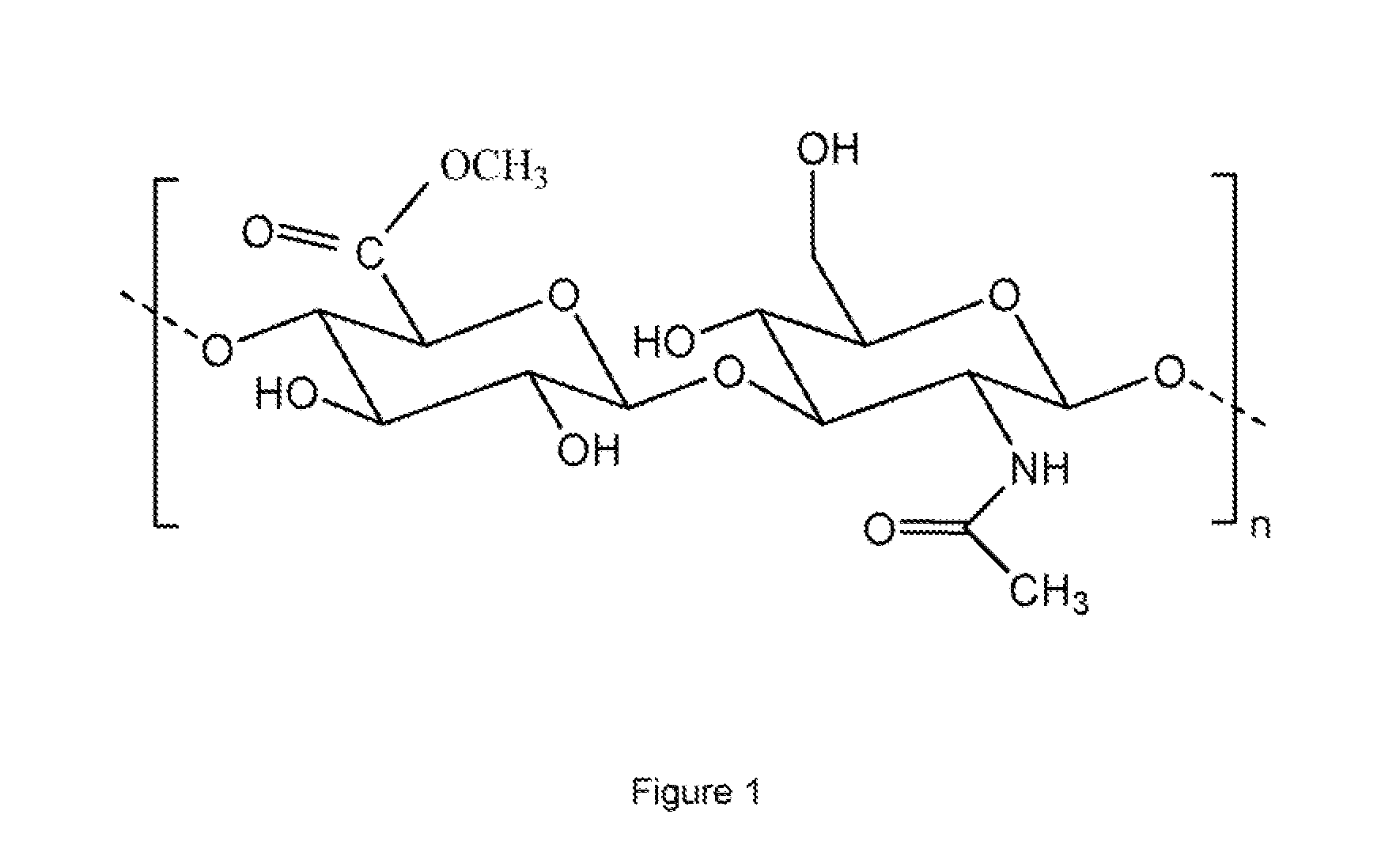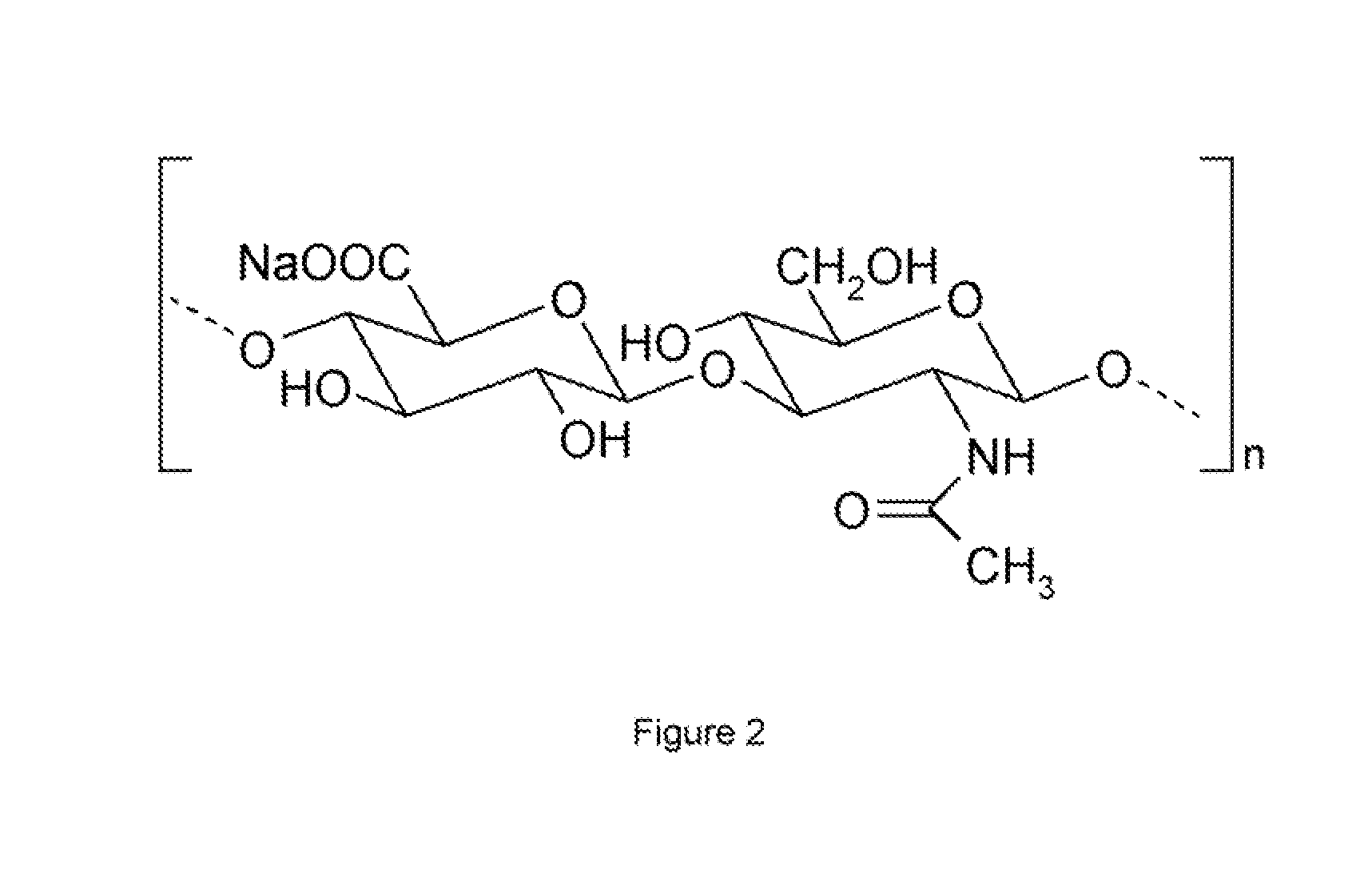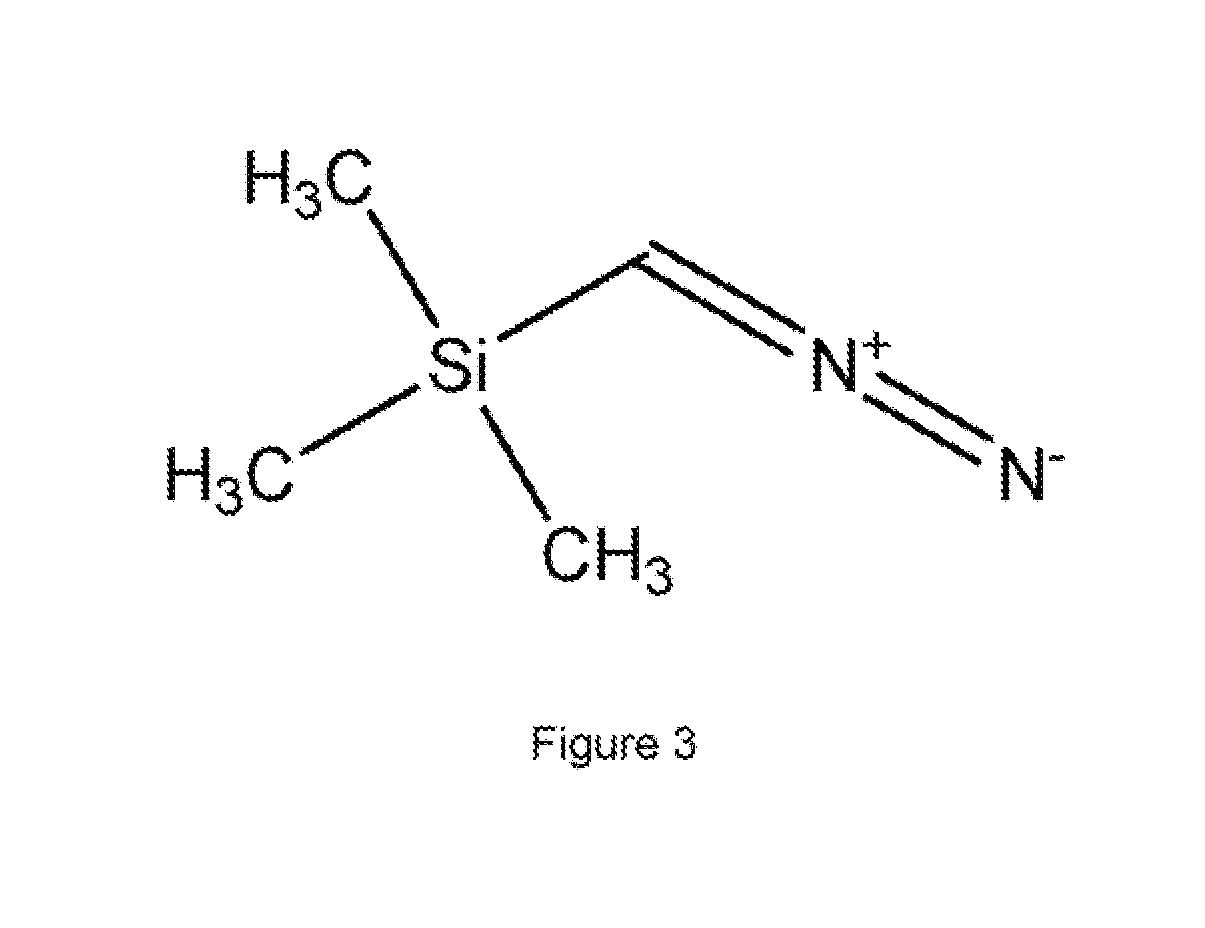Methyl esters of hyaluronic acid
a technology of hyaluronic acid and esters, which is applied in the direction of sugar derivates, prosthesis, bandages, etc., can solve the problems of requiring a number of cumbersome steps, limited use of ha in some applications, and difficult to process into biomaterials, etc., and achieves high reactivity of the esterification reagent used, the effect of rapid invention
- Summary
- Abstract
- Description
- Claims
- Application Information
AI Technical Summary
Benefits of technology
Problems solved by technology
Method used
Image
Examples
example 1
[0067]Medium molecular weight hyaluronic acid (750,000-1,000,000 Dalton) was converted into H+ form by passing through cation exchange resin (Dowex 50 WX8200). It was lyophilized in a freeze drier.
[0068]The resulting product (50 mg, 0.125 mmol) was suspended in methanol (10 mL) at room temperature (20° C.). The temperature of the reaction mixture was then decreased to 0° C. To the above reaction mixture etheric solution of freshly prepared diazomethane was added (10 mL). The reaction was done under stirring at low temperature (0-5° C.). The molar ratio of hyaluronic acid to diazomethane was 1:8. After 4 h, the reaction mixture was filtered. It was washed with methanol (3×50 mL) and diethyl ether (3×50 mL). The resulting solid was dried under vacuum. It was dissolved in deionised water and lyophilized. The yield of the product was >90% (47 mg). The degree of substitution of the resulting product was 1.0.
example 2
[0069]Medium molecular weight hyaluronic acid (750,000-1,000,000 daltons) was converted into H+ form by passing through cation exchange resin (Dowex 50 WX8-200). It was lyophilized in a freeze drier.
[0070]The resulting product (100 mg 0.25 mmol) was suspended in methanol (10 mL) at room temperature (20° C.). The temperature of the reaction mixture was then decreased to 0° C. To the above reaction mixture etheric solution of trimethylsilyldiazomethane (125 microliters, 0.25 mmol) was added. The reaction was carried out under stirring at low temperature (0-5° C.). The molar ratio of hyaluronic acid to TMSD was 1:1. After 6 h the reaction mixture was filtered. It was washed with organic solvents viz. methanol and diethyl ether (3×50 mL each). The resulting solid was dried. It was dialyzed and lyophilized. The yield of the product was >90% (93 mg). The DS obtained was ˜0.5.
example 3
[0071]Medium molecular weight hyaluronic acid (750.000-1,000,000 daltons) was converted into H+ form by treatment with 0.6 N ethanolic HCl. It was lyophilized in a freeze drier.
[0072]The resulting product (100 mg, 0.25 mmol) was suspended in methanol (10 mL). The temperature of the reaction mixture was then decreased to 0° C. A portion of etheric solution of TMSD (125 microliters, 0.25 mmol) was added to the above reaction mixture. The reaction was done with stirring at low temperature (0-5° C.). The molar ratio of hyaluronic acid to TMSD was 1:1. After 6 h the reaction mixture was filtered. It was washed with organic solvents, viz. methanol and diethyl ether. The resulting solid was dried, dialyzed and lyophilized. The yield of the product was >90% (94 mg). The DS obtained was ˜0.5.
[0073]Using the above processes different methyl esterified hyaluronic acid derivatives with varying percent esterification were obtained by treatment with varying molar amounts of TMSD. The %-esterifica...
PUM
| Property | Measurement | Unit |
|---|---|---|
| Temperature | aaaaa | aaaaa |
| Temperature | aaaaa | aaaaa |
| Mass | aaaaa | aaaaa |
Abstract
- (a) providing a suspension comprising the acid form of the hyaluronic acid in methanol;
- (b) adding an organic solution of trimethylsilyldiazomethane to the suspension and mixing, whereby methyl esters of hyaluronic acid are produced; and
- (c) recovering the hyaluronic acid methyl esters.
Description
Claims
Application Information
 Login to View More
Login to View More - R&D
- Intellectual Property
- Life Sciences
- Materials
- Tech Scout
- Unparalleled Data Quality
- Higher Quality Content
- 60% Fewer Hallucinations
Browse by: Latest US Patents, China's latest patents, Technical Efficacy Thesaurus, Application Domain, Technology Topic, Popular Technical Reports.
© 2025 PatSnap. All rights reserved.Legal|Privacy policy|Modern Slavery Act Transparency Statement|Sitemap|About US| Contact US: help@patsnap.com



